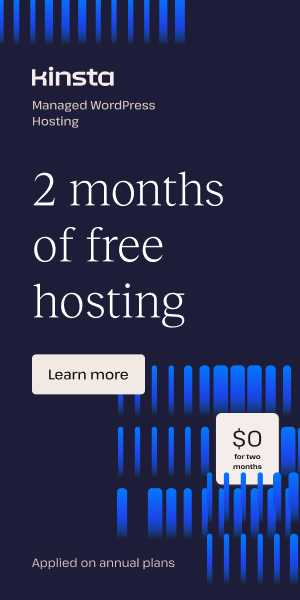Typography Best Practices in Figma for WP
Enhancing Web Design Through Typography Best Practices
In the dynamic landscape of digital design, typography plays an indispensable role in shaping user experience and website aesthetics. For designers working with Figma2WP Service, mastering figma typography is crucial when converting visual designs into WordPress websites that are not just visually appealing but also highly functional and readable. This comprehensive guide delves into the essential typography best practices within Figma specifically tailored for WordPress font optimization, helping you craft visually effective and accessible web pages.
Understanding Typography Essentials in Figma
Typography in design extends beyond merely selecting fonts; it involves strategic decisions about font pairing, size, hierarchy, spacing, and responsiveness. Mastering text and typography in Figma involves first establishing consistent font usage to maintain design cohesion, such as selecting a limited font family for headers and body text. Figma supports Google Fonts natively and allows integration of custom fonts, which provides flexibility for designers to align brand identity with WordPress font capabilities.
- Font Size and Hierarchy: Establish clear typographic hierarchy by differentiating headings, subheadings, and body text through size variations. This approach improves scanability and guides users naturally through the content.
- Font Weight and Style: Use weight variations (light, regular, bold) thoughtfully to emphasize key information without overwhelming the user.
- Line Height and Letter Spacing: Proper spacing enhances readability, especially for longer texts—adjust these parameters within Figma’s text settings for optimal layout results.
Learning how to add and manipulate text layers properly within Figma’s interface, including using point text for short snippets and bounding box text for paragraphs, gives designers the flexibility to simulate real-world content structures accurately.
Adapting Typography Seamlessly for WordPress
WordPress offers a variety of tools to translate these typography decisions effectively. From the Block Editor to theme customizers and the theme.json configuration, designers can adapt their Figma typography to be dynamic and responsive across devices and screen sizes. This process is often referred to as creating adaptive typography, a practice well explained in the Figma2WP blog.
Consider these key factors for typography optimization when moving from Figma to WordPress:
- Responsive Font Sizes: Using relative units like
emorreminstead of fixed pixels allows text to scale gracefully on different devices. - Web-Safe and Performance-Optimized Fonts: Leveraging web fonts such as Google Fonts ensures compatibility and fast loading times compared to heavy custom font files.
- Consistent Line Lengths: Ideal line lengths (typically 50-75 characters per line) improve readability and should be tested within WordPress layout constraints.
To ensure these best practices translate accurately in the final site, employing a service like Figma2WP’s Figma to WordPress conversion helps preserve typography fidelity while enabling customization.
Technical Tips for Typography When Converting Figma Designs to WordPress
Translating typography from Figma mockups into a functional WordPress theme requires blending design precision with development know-how. The process involves several technical dimensions worth noting:
- Export Custom Typography Assets: Figma’s export features allow designers to extract font files and CSS styles, which can be integrated into custom WordPress themes for pixel-perfect results.
- Use CSS Frameworks and Variables: Employ CSS variables for font sizes, weights, and families to make your WordPress theme easier to maintain and update as typography needs evolve over time.
- Leverage WordPress’s Template Hierarchy: Customize typography at the template level, adjusting styles within theme files for different contexts such as posts, pages, and widgets.
- Optimize for Performance: Limit the number of font variations and avoid excessive typographic animations that can degrade page load speeds and user experience.
The synergy between Figma design details and WordPress theme customization is vital. It is what elevates a simple website to an engaging, brand-aligned digital presence. For an in-depth technical walkthrough, the article on Converting Figma Design to WordPress is an excellent resource.
Real-World Examples: Typography in Action
To illustrate how these practices play out, consider a project where a marketing agency required a WordPress site with strict adherence to their brand’s typography guidelines. By designing in Figma with specific Google Fonts selected for headings and body, and carefully defining font sizes and line heights, the exported design was converted via Figma2WP. The final site preserved the exact typographic hierarchy, ensuring accessibility and responsiveness across devices.
Another case involved an e-commerce platform needing dynamic typography that adjusted automatically according to user device and preference settings. The team utilized Figma’s flexible text layers alongside WordPress’s theme.json and CSS variables to craft an adaptive font system, improving readability and conversion rates on mobile devices.
Additional Resources for Typography Mastery
- Figma’s Official Typography Guide – Understanding the fundamentals of type design and application.
- Google Fonts – Free web font repository integrated with Figma and WordPress.
- WordPress Theme JSON Documentation – How to configure typography settings at the theme level.
- CSS Tricks: Font Family Property – Technical explanation on font-family declarations.
- Adaptive Typography in WordPress – Deep dive into responsive font scaling.
Taking Your Typography from Figma Design to WordPress Success
Optimizing design text in Figma with WordPress implementation in mind is more than a design challenge—it’s a strategic move to enhance overall site usability and brand consistency. By meticulously managing font choices, hierarchy, spacing, and responsiveness within Figma, and applying proven methods to translate these into WordPress themes, you can achieve websites that are both stunning and user-friendly.
To ensure your typography vision becomes a reality in a WordPress environment, consider leveraging the expertise of conversion specialists like Figma2WP Service. Their knowledge in maintaining typography fidelity during design-to-development workflows is a vital asset for anyone serious about professional web design.
Ready to elevate your WordPress project with flawless typography optimized from Figma designs? Contact Us today and get expert assistance tailored to your unique needs.
More From Our Blog
Crafting Engaging Media Portals with Effective Article Design Creating a compelling media portal today demands exceptional attention to both aesthetics and functionality. The design of article pages, user navigation, and responsiveness play a decisive role in reader engagement and retention. Especially when it comes to transforming designs from platforms like Figma into fully functional WordPress Read more…
Elevating Your Online Presence Through Engaging Social Design and Community WP Building a vibrant community WP (WordPress) site is increasingly crucial in the digital age for brands aiming to foster trust, loyalty, and dynamic interaction among their customers. By integrating Figma2WP Service solutions, businesses can transform precise figma social design prototypes into powerful WordPress-based discussion Read more…


